Children’s Gender Worldviews: Exploring Gender, Diversity, and Participation Through Postmodern Picture Books
Abstract
1. Introduction
2. Literature Review
2.1. Gender Equity and Childhood
2.2. Gendered Education
2.3. Using Postmodern Picture Books to Discuss Controversial Themes Like Gender
3. Methodology and Ethics
The Read-Aloud Program
4. Results and Discussion
4.1. What Children Say About Gender: The Family
4.2. What Children Say About Gender: Boy Is a Boy, and Girl Is a Girl … or Is It?
4.3. Gendering of Colours and Professions
5. Conclusions
Author Contributions
Funding
Institutional Review Board Statement
Informed Consent Statement
Data Availability Statement
Acknowledgments
Conflicts of Interest
Correction Statement
References
- Aboud, F., & Doyle, A. (1996). Does talk of race foster prejudice or tolerance in children? Canadian Journal of Behavioural Science, 28(3), 161–170. [Google Scholar] [CrossRef]
- Agarwal-Rangnath, R. (2020). Planting the seeds of equity: Ethnic studies and social justice in the K-2 classroom. Teachers College Press. [Google Scholar]
- Backman, A. (2024). When the sun is out of the picture: Exploring a variation theory key to children’s imagination in a picturebook reading activity. Early Childhood Education Journal, 52, 1655–1666. [Google Scholar] [CrossRef]
- Baker-Sperry, L. (2006). Gendered agency: Power in the elementary classroom. Women and Language, 29(2), 38–46. [Google Scholar]
- Bartholomaeus, C., & Senkevics, A. S. (2015). Accounting for gender in the sociology of childhood: Reflections from research in Australia and Brazil. SAGE Open, 5(2), 1–9. [Google Scholar] [CrossRef]
- Becker, H. S. (2007). Telling about society. The University of Chicago Press. [Google Scholar]
- Bourdieu, P. (1999). Understanding. In M. Pialoux, P. Bourdieu, & P. P. Ferguson (Eds.), The weight of the world: Social suffering in contemporary society (pp. 607–626). Polity Press. [Google Scholar]
- Bradfield, K., & Exley, B. (2020). Reading and viewing children’s picture books with grammar in mind. In A. Woods, & B. Exley (Eds.), Literacies in early childhood: Foundations for equity and quality (1st ed., pp. 73–93). Oxford University Press. [Google Scholar]
- Brown, C. S., & Bigler, R. S. (2005). Children’s perceptions of discrimination: A developmental model. Child Development, 76(3), 533–553. [Google Scholar] [CrossRef]
- Butler, J. (1994). Gender as performance: An interview with judith butler. Radical Philosophy, 67, 32–39. [Google Scholar]
- Cidreira, A. C., & Faustino, A. C. (2021). Vamos além no “era uma vez”: Literatura infantil, matemática e questões étnico-raciais nos anos iniciais [Beyond ‘once upon a time’: Children’s literature, mathematics, and ethnic-racial issues in early years education]. Em Teia: Revista de Educação Matemática e Tecnológica Iberoamericana, 12(3), 1–15. [Google Scholar]
- Ciecierski, K. L., McTigue, E. M., & McGinty, A. S. (2017). The influence of books’ textual features and caregivers’ extratextual talk on children’s science learning in shared book reading. Developmental Psychology, 59(2), 390–411. [Google Scholar]
- Coats, K. (2019). Visual conceptual metaphors in picturebooks: Implications for social justice. Children’s Literature Association Quarterly, 44(4), 364–380. [Google Scholar] [CrossRef]
- Combs, S., & Higgins, K. N. (2023). The relationship between shared picturebook reading and language development in young children. Early Childhood Education Journal, 52(7), 1725–1735. [Google Scholar] [CrossRef]
- Cunningham, K. E., & Enriquez, G. (2013). Bridging core readiness with social justice through social justice picture books. The NERA Journal, 48(2), 28–37. [Google Scholar]
- Davies, B. (1997). Constructing and deconstructing masculinities through critical literacy. Gender and Education, 9(1), 9–30. [Google Scholar] [CrossRef]
- Dionne, L. (2018). L’analyse qualitative des données. In T. Karsenti, & L. Savoie-Zajc (Eds.), La recherche en éducation. Étapes et approches. Presses de l’Université de Montréal. [Google Scholar]
- Earles, J. (2017). Reading gender: A feminist, queer approach to children’s literature and children’s discursive agency. Gender and Education, 29(3), 369–388. [Google Scholar] [CrossRef]
- Ebert, W. M., Jost, L., & Jansen, P. (2024). Gender stereotypes in preschoolers’ mental rotation. Frontiers in Psychology, 15, 1284314. [Google Scholar] [CrossRef]
- Engebretson, K. E. (2014). Another missed opportunity: Gender in the national curriculum standards for social studies. Social Studies Research and Practice, 9(3), 21–34. [Google Scholar]
- Falkner, A., & Clark, A. (2018). Following Dylan’s lead: Student-led discussions of gender variance in the elementary classroom. In S. B. Shear, C. M. Tschida, E. Bellows, L. B. Buchanan, & E. Saylor (Eds.), (Re)imagining elementary social studies: A controversial issues reader (pp. 295–306). Information Age. [Google Scholar]
- Ferreira, M. (2002). O trabalho de fronteira nas relações entre géneros em espaços de ‘brincar ao faz-de-conta’ [Border work in gender relations within pretend play contexts]. Ex Aequo, 7, 113–130. [Google Scholar]
- Ferreira, M., & Borges, J. (2024). Observatório nacional do bullying—Resultados 2020–2024 [National bullying observatory—Results 2020–2024]. Associação Plano i. [Google Scholar]
- Ferreira, M., & Tomás, C. (2022). Fazendo género heteronormativo no jardim de infância [Performing heteronormative gender in early childhood education]. Interacções, 61, 211–232. [Google Scholar]
- Goldstone, B. P. (2004). The postmodern picture book: A new subgenre. Language Arts, 81(3), 196–204. [Google Scholar]
- Gonçalves, C., Tomás, C., & Almeida, A. (2024). “Crianças leitoras do mundo”: Diversidade, classe, género e participação [“child readers of the world”: Diversity, class, gender, and participation]. Educação & Realidade 49, e135537. [Google Scholar] [CrossRef]
- Guidetti, M., Cavazza, N., & Graziani, A. R. (2014). Healthy at home, unhealthy outside: Food groups associated with family and friends and the potential impact on attitude and consumption. Journal of Social and Clinical Psychology, 33, 343–364. [Google Scholar] [CrossRef]
- Hanna, A., & Lundy, L. (2021). Children’s voices. In C. Tomás, G. Trevisan, M. J. Carvalho, & N. Fernandes (Eds.), Conceitos-chave em sociologia da infância: Perspetivas globais (pp. 467–468). UMinho Editora. [Google Scholar] [CrossRef]
- Hirschfeld, L. A. (2008). Children’s developing conceptions of race. In S. M. Quintana, & C. McKown (Eds.), Handbook of race, racism, and the developing child (1st ed., pp. 37–54). Wiley. [Google Scholar]
- Hoppe, K. (2022). Teacher read-aloud: More than just story time. Kansas English, 103(1), 7–14. [Google Scholar] [CrossRef]
- Husband, T. (2019). Using multicultural picture books to promote racial justice in urban early childhood literacy classrooms. Urban Education, 54(8), 1058–1084. [Google Scholar] [CrossRef]
- James, A., & Prout, A. (2001). Constructing and reconstructing childhood: Contemporary issues in the sociological study of childhood (2nd ed., pp. 1–278). Routledge. [Google Scholar]
- Karniol, R., & Gal-Disegni, M. (2009). The impact of gender-fair versus gender-stereotyped basal readers on 1st-grade children’s gender stereotypes: A natural experiment. Journal of Research in Childhood Education, 23(4), 411–420. [Google Scholar] [CrossRef]
- Karsenti, T., & Demers, S. (2018). L’étude de cas. In T. Karsenti, & L. Savoie-Zajc (Eds.), La recherche en éducation. Étapes et approches. Presses de l’Université de Montréal. [Google Scholar] [CrossRef]
- Keddell, E. (2023). Recognising the embedded child in child protection: Children’s participation, inequalities, and cultural capital. Children and Youth Services Review, 147, 106815. [Google Scholar] [CrossRef]
- Keenan, H., & Hot Mess, L. M. (2020). Drag pedagogy: The playful practice of queer imagination in early childhood. Curriculum Inquiry, 50(5), 440–461. [Google Scholar] [CrossRef]
- Kneeskern, E. E., & Reeder, P. A. (2020). Examining the impact of fiction literature on children’s gender stereotypes. Current Psychology, 39(1), 1–14. [Google Scholar] [CrossRef]
- Kotler, J. A., Haider, T. Z., & Levine, M. H. (2019). Identity matters: Parents’ and educators’ perceptions of children’s social identity development. Sesame Workshop. [Google Scholar]
- Liebel, M. (2020). Decolonizing childhoods: From exclusion to dignity. Policy Press. [Google Scholar]
- Magalhães, A., Gonçalves, C., & Almeida, A. (2022). A literatura para a infância como promotora das aprendizagens de estudo do meio [Children’s literature as a promoter of environmental studies learning]. In A investigação na formação inicial de professores (M. J. Cardona, E. Linhares; pp. 158–176). Instituto Politécnico de Santarém/ESSE. ISBN 978-989-54983-8-3. [Google Scholar]
- Mandalaywala, T. M., Tai, C., & Rhodes, M. (2020). Children’s use of race and gender as cues to social status. PLoS ONE, 15(6), e0234398. [Google Scholar] [CrossRef] [PubMed]
- Marques da Silva, S. (2002). Masculinidades inquietas: Uma possível reflexão… [Unsettled masculinities: A possible reflection…]. Ex Aequo, 7, 107–111. [Google Scholar]
- McKown, C., & Weinstein, R. S. (2003). The development and consequences of stereotype consciousness in middle childhood. Child Development, 74(2), 498–515. [Google Scholar] [CrossRef]
- Meyer, E. J. (2015). Gender, bullying, and harassment: Strategies to end sexism and homophobia in schools. Teachers College Press. [Google Scholar]
- Moffit, C. A. (2023). “I’m the head zoologist!”: Integrating science and literacy learning in kindergarten with inquiry and animals. Early Childhood Education Journal, 2, 529–538. [Google Scholar] [CrossRef]
- Monteiro, R., Lopes, M., Vieira, C. C., Santos, C. C., & Ferreira, V. (2024). Políticas públicas de igualdade de género na educação em Portugal: Da legislação à difícil transposição prática [Public policies on gender equality in education in Portugal: From legislation to the challenging practical implementation] (pp. 1–115). Centro de Estudos Sociais, Universidade de Coimbra. [Google Scholar]
- Naeem, M., Ozuem, W., Howell, K., & Ranfagni, S. (2023). A step-by-step process of thematic analysis to develop a conceptual model in qualitative research. International Journal of Qualitative Methods, 22, e16094069231205789. [Google Scholar] [CrossRef]
- Norris, K. (2020). Using the read-aloud and picture books for social justice. Kappa Delta Pi Record, 56, 183–187. [Google Scholar] [CrossRef]
- Olsson, M., & Martiny, S. E. (2018). Does exposure to counterstereotypical role models influence girls’ and women’s gender stereotypes and career choices? A review of social psychological research. Frontiers in Psychology, 9, 2264. [Google Scholar] [CrossRef]
- O’Neil, K. (2010). Once upon today: Teaching for social justice with postmodern picturebooks. Children’s Literature in Education, 41(1), 40–51. [Google Scholar] [CrossRef]
- Patterson, M. M., & Bigler, R. S. (2006). Preschool children’s attention to environmental messages about groups: Social categorization and the origins of intergroup bias. Child Development, 77(4), 847–860. [Google Scholar] [CrossRef]
- Pereira, M. d. M. (2012). Fazendo género no recreio: A negociação do género em espaço escolar [Doing gender in the playground: Negotiating gender in the school environment] (pp. 1–231). ICS. ISBN 978-972-671-305-0. [Google Scholar]
- Pincock, K., Jones, N., & Bani Odeh, K. (2023). ‘Had I been a girl it would have been a big problem’: An intersectional approach to the social exclusion of refugee adolescents with disabilities in Jordan. Childhood, 30(2), 129–144. [Google Scholar] [CrossRef]
- Ramos, A. M. (2020). Desafios da leitura do livro ilustrado pós-moderno: Formar melhores leitores cada vez mais cedo. Sede de Ler, 5(1), 5–8. [Google Scholar]
- Russel, D. L. (2009). Literature for children: A short introduction. Pearson Education. [Google Scholar]
- Sandretto, S. (2018). A case for critical literacy with queer intent. Journal of LGBT Youth, 15(3), 197–211. [Google Scholar] [CrossRef]
- Smolkin, L. B., & Young, C. A. (2011). Missing mirrors, missing windows: Children’s literature textbooks and LGBT topics. Language Arts, 88(3), 217. [Google Scholar] [CrossRef]
- Solbes-Canales, I., Valverde-Montesino, S., & Herranz-Hernández, P. (2020). Socialization of gender stereotypes related to attributes and professions among young spanish school-aged children. Frontiers in Psychology, 11, 609. [Google Scholar] [CrossRef]
- Spyrou, S. (2024). From extractivist practices and the child-as-data to ethics of reciprocity and mutuality in empirical childhood research. Childhood, 31(1), 3–12. [Google Scholar] [CrossRef]
- Strouse, G., Nyhout, A., & Ganea, P. (2018). The role of book features in young children’s transfer of information from picture books to real-world contexts. Frontiers in Psychology, 9, 50. [Google Scholar] [CrossRef]
- Sullivan, J., Wilton, L., & Apfelbaum, E. P. (2021). Adults delay conversations about race because they underestimate children’s race processing. Journal of Experimental Psychology: General, 150(8), 1511–1523. [Google Scholar] [CrossRef] [PubMed]
- Tondreau, A. (2024). Using postmodern picture books as mentor texts for critical writing pedagogy. Language Arts, 102(1), 7–19. [Google Scholar] [CrossRef]
- Tschida, C. M., & Buchanan, L. B. (2017). What makes a family? Sharing multiple perspectives using an inclusive text set. Social Studies and the Young Learner, 30(2), 3–7. [Google Scholar]
- Van Ausdale, D., & Feagin, J. (2001). The first R: How children learn race and racism. Rowman and Littlefield. [Google Scholar]
- Wellman, H. M., Cross, D., & Watson, J. (2001). Meta-analysis of theory-of-mind development: The truth about false belief. Child Development, 72(3), 655–684. [Google Scholar] [CrossRef]
- Whitford, A. (2023). Understanding and addressing gender stereotypes with elementary children: The promise of an integrated approach. Theory & Research in Social Education, 51(2), 264–295. [Google Scholar] [CrossRef]
- Wild, N. (2023). Picturebooks for social justice: Creating a classroom community grounded in identity, diversity, justice, and action. Early Childhood Education Journal, 51, 733–741. [Google Scholar] [CrossRef]
| Age | Boys | Girls | Total |
|---|---|---|---|
| 6 years old | Manuel 1 | 1 | |
| 7 years old | Afonso 1 Samir 2 Rafael 1,** Eugénio 1,** Caetano 1 Lucas 1 Gonçalo 1 José 3,* Joaquim Denis 1 Paulo Cristiano 1 | ||
| Valentina 4 Madalena 1 Helena 5,** Natália 1 Teresa 1 Diana 1 Mariana 1 | 19 | ||
| 8 years old | Sofia 1 Juliana 5,** | 2 | |
| Total | 13 | 9 | 22 |
| Date and Time of Session | Books | Number of Children and Adults |
|---|---|---|
| 18 January 2023 1 h | Parr, T. Não faz mal ser diferente [It’s okay to be different]; Little, Brown and Company: New York, NY, USA, 2006.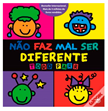 | 10 children and a researcher |
| 23 January 2023 1 h | Bacelar, M. O livro do Pedro [The Book of Peter]; Editorial Presença: Lisboa, Portugal, 2008.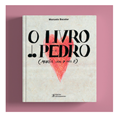 | 7 children and a researcher |
| 30 January 2023 1 h | Estrela, J. Os vestidos do Tiago [Tiago’s Dresses]; Kalandraka: Lisbon, Portugal, 2016. | 7 children and a researcher |
| 9 March 2023 1 h | Matoso, M. Todos fazemos tudo [We All Do Everything]; Planeta Tangerina: Lisboa, Portugal, 2011.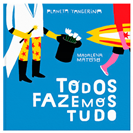 | 5 children and a researcher |
| 21 March 2023 e 22 March 2023 2 h | Love, J. O Jaime é uma Sereia [Jaime is a Mermaid]; Editorial Presença: Lisboa, Portugal, 2020.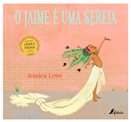 | 13 children, a researcher, and a teacher |
| 30 March 2023 1 h | Bundo, M., & Twiss, J. Um dia na vida de Marlon Bundo [A Day in the Life of Marlon Bundo]; Planeta Tangerina: Lisboa, Portugal, 2018.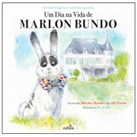 | 14 children, a researcher, and a teacher |
| 17 April 2023 1 h | Quintiá, X.; Quarello, M. A. C. Titiritesa. Kalandraka: Matosinhos, Portugal, 2008. | 14 children and a researcher |
Disclaimer/Publisher’s Note: The statements, opinions and data contained in all publications are solely those of the individual author(s) and contributor(s) and not of MDPI and/or the editor(s). MDPI and/or the editor(s) disclaim responsibility for any injury to people or property resulting from any ideas, methods, instructions or products referred to in the content. |
© 2025 by the authors. Licensee MDPI, Basel, Switzerland. This article is an open access article distributed under the terms and conditions of the Creative Commons Attribution (CC BY) license (https://creativecommons.org/licenses/by/4.0/).
Share and Cite
Gonçalves, C.; Tomás, C.; Almeida, A. Children’s Gender Worldviews: Exploring Gender, Diversity, and Participation Through Postmodern Picture Books. Educ. Sci. 2025, 15, 476. https://doi.org/10.3390/educsci15040476
Gonçalves C, Tomás C, Almeida A. Children’s Gender Worldviews: Exploring Gender, Diversity, and Participation Through Postmodern Picture Books. Education Sciences. 2025; 15(4):476. https://doi.org/10.3390/educsci15040476
Chicago/Turabian StyleGonçalves, Carolina, Catarina Tomás, and Aline Almeida. 2025. "Children’s Gender Worldviews: Exploring Gender, Diversity, and Participation Through Postmodern Picture Books" Education Sciences 15, no. 4: 476. https://doi.org/10.3390/educsci15040476
APA StyleGonçalves, C., Tomás, C., & Almeida, A. (2025). Children’s Gender Worldviews: Exploring Gender, Diversity, and Participation Through Postmodern Picture Books. Education Sciences, 15(4), 476. https://doi.org/10.3390/educsci15040476










